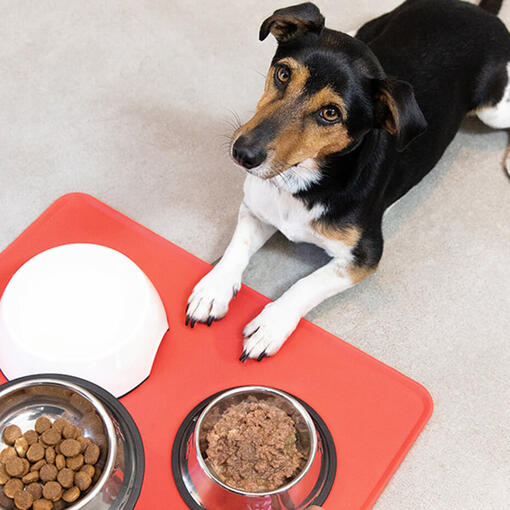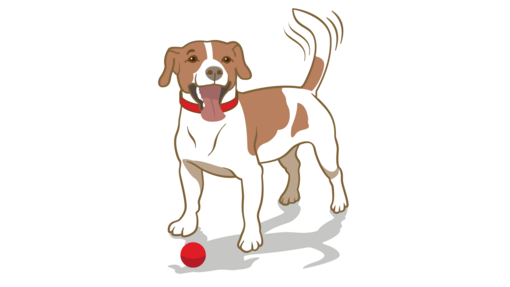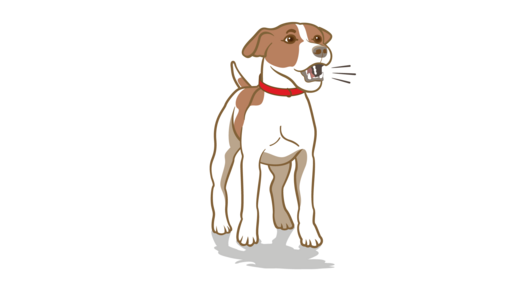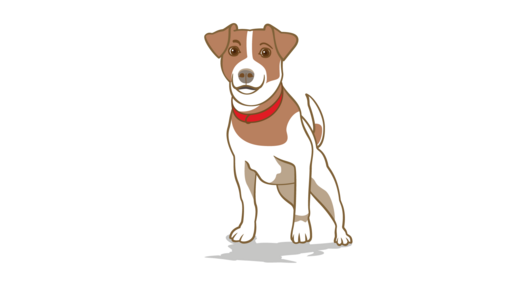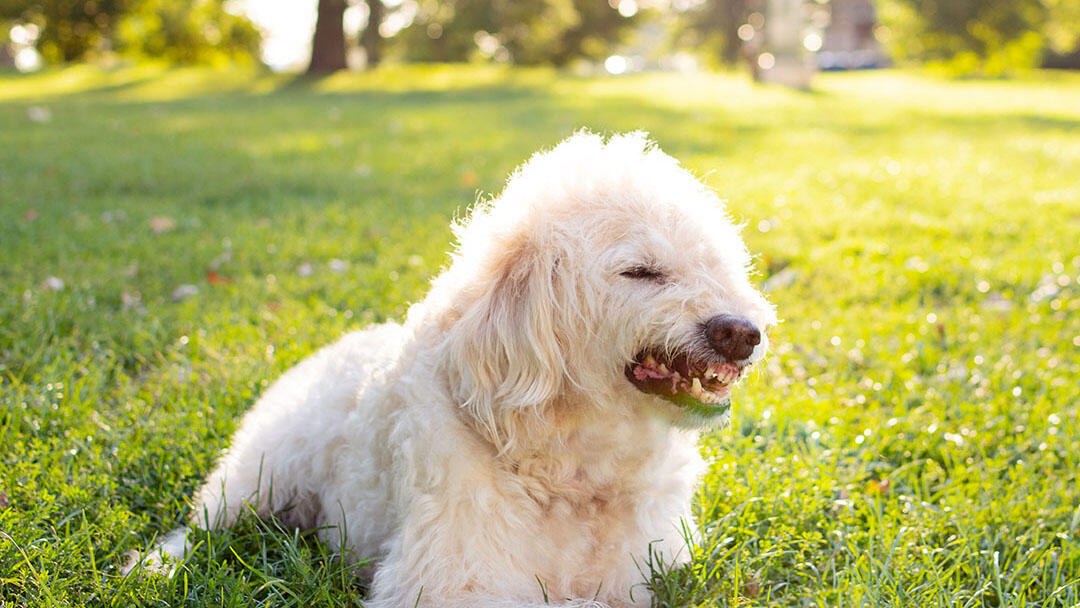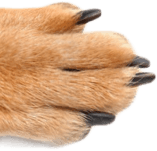
Anyone who’s ever spent time in the company of a dog knows that, just like people, dogs have personalities that are unique to them, and they experience many feelings in the same way as humans and all other mammals.
While they don’t experience higher emotions such as shame, spite or contempt, they have the same range of basic emotions as us, such as happiness, sadness, relief, frustration and fear.
These feelings are essential in helping dogs learn about the world, and encourage them to behave in certain ways. If a dog feels fear, for example, they’re likely to seek out safety from the threat and gain a sense of relief, while the positive feelings they get from positive social encounters encourage good relationships with those around them.
Of course, your dog can’t tell you how they feel, but you can understand their emotions and their behaviour better by observing your dog’s body language and getting to grips with the basics of dog communication. This guide will help you to recognise your dog’s feelings, which will help deepen your special bond.
Key Body Language Clues to Your Dog's Emotions
Happy
Happiness is one of the easiest dog emotions to spot, and it’s definitely a favourite expression for your furry family friend! Your dog’s eyes are gentle and soft, with a relaxed forehead and their ears are floppy if they’re running, or moving backwards and forwards in an engaging, friendly manner. Their whole body looks relaxed and radiates happiness.
Dogs can’t actually smile, but some do appear to grin! Their lips are loose, their mouth slightly open and their tongue may poke out as they pant evenly and gently.
A dog’s tail is a great indicator of their mood – a waggy tail usually means a happy dog! If they’re wagging their tail so vigorously it seems that their entire back legs are shaking then it means they’re very happy indeed! Other dogs might just have a relaxed sway to the whole length of their tails.
It is important to take tail wags in the context of the rest of a dog’s body language, however – in the same way that a human smiling doesn’t always mean they are actually happy!
A happy dog moves in a relaxed, easy way, and will encourage you to play and share their happiness.
Anxious
An anxious dog's eyes can be wide and staring or they may sometimes narrow them and avoid eye-contact. In anxious dogs, you might see wrinkling or tension on their forehead, and their ears, if pricked, will be held slightly back as they move them around to try to gather clues about possible danger. If they have long, swinging ears (also known as ‘pendulous’ ears), they may be held closer to their head than usual.
Their mouth will usually be closed but, if it’s open, their lips will be tense and they may lick them and/or yawn nervously, even though you know they aren’t hungry or tired.
Their body and tail are probably still and in a slightly lowered posture. Anxious dogs sometimes wag their tails cautiously, but this is done as a gesture of appeasement rather than because they’re happy. This is why a worried dog can sometimes go unrecognised, so keep a close eye on them if they’re in a new or challenging situation.
Fearful
If your dog is fearful their body language will usually make it quite obvious; this type of dog expression can be very dramatic. Different dogs have different fear responses: some will cower to make themselves look small, some will roll on their back to show appeasement in a social conflict, some simply stand very still and others will bark loudly or growl defensively.
A scared dog's eyes may be wide open, darting backwards and forwards, and either staring and hard or squinting and taking sideways glances at whatever object or person it is they’re afraid of. Their ears will be flattened against their head, and their lips will be tense. They might lick their lips or yawn, and their tail will be still, low or tucked between their legs. They will usually be so focused on the threat that they even refuse their favourite treat!
A dog’s main goal when they feel fearful is to simply survive the perceived threat – either by doing everything they can to avoid it or by confronting it (depending on their personality), so their body language, facial expressions and appetite will only go back to normal when they feel safe again.
Each dog’s way of showing fearfulness can be very different depending on their personality or their breed/body shape. This is when it is really important to know your own dog and how they look when they are content. This way you will know when their body language changes in any way.
Frustrated
Dogs can feel different types of frustration, from longer-term depressed to a more active, immediate frustration, usually in response to a specific event (such as not being given something they want). They can also feel frustrated if they’re not able to get away from something unpleasant.
When it comes to dog body language, a frustrated dog is usually tense and stiff-legged. They might bark or lunge at the object of their frustration, or try to run away from it. They will be totally focused on the source and probably won’t listen or respond to any of your attempts to distract them.
Their eyes will be wide and unblinking, their ears pricked and if they aren’t barking, their lips will be stiff.
This is a very tense state and dogs can’t maintain it forever, so they may eventually resign themselves to the frustrating situation, although this ‘learned helplessness’ can lead to them becoming depressed. This can be misinterpreted as calm acceptance so your dog needs lots of careful, loving attention to help them relax after they’ve been frustrated, before they will behave normally again.
Relieved
Relief is quite noticeable because it usually follows a previously tense and negative emotional state. It’s important to know when your dog feels frustrated, anxious or afraid, but it’s just as important to know when they’re feeling relieved and relaxed again.
Just like humans, dogs experience relief when they resolve worries or difficulties – or the scary thing stops or goes away. You’ll often be able to see tension release all over their body, from their nose to their tail. Their eyes will soften, their head will lower, their body and face muscles will relax and they’ll noticeably calm down.
Some dogs will yawn, while more reserved characters will drop their heads, avoid eye contact and almost appear to sigh inwardly. More extroverted personalities may shake themselves, stretch into a deep play-bow or even charge around in a euphoric state – all of these actions help to release their tension.
Focused
If your dog is focused, they’re alert and concentrating on something important, such as a ball, a treat, or even you. This picture shows how your dog should look when you’re training them – watching, listening and ready to work to earn their rewards.
When your dog is alert, their eyes are open, bright and perhaps unblinking and a little intense as they concentrate on the object of their attention. Their ears will be pricked or held forward, and their mouth may be closed, or open with their tongue held still and centrally. Their head will usually be held high, unless they’re about to take off chasing something, in which case it may be lowered and extended forwards.
If they’re focused on something enjoyable or pleasing, their whole body may strain towards it, quivering in anticipation and ready for action!
Angry
Tread carefully if you suspect your dog is feeling this emotion, especially until the threat goes away.
An angry dog will usually try to make themselves look as large and threatening as possible, with a stiff, upright body, hard and unblinking eyes and flattened ears. It’s common for their fur to stand on end as well.
Their mouth will possibly be open or else held clamped shut, with their lips tense and drawn back, with their muzzle and nose wrinkled and they may bare their teeth. Their weight will be forward over their front legs ready to lunge or attack, and they will either be silent or perhaps making a low threatening growl – a truly angry dog doesn't usually shout about it!
Watch for a tail held high and stiffly – and while it could be wagging, this will be very rigid and almost like it is vibrating.
Avoid provoking your dog if they’re angry. Don't stare or shout at them or make any sudden movements, but give them time and space to calm down.
Neutral
This is how your dog will ideally spend most of their day – relaxed, well-exercised, well-fed and comfortable in familiar surroundings. If they’re lying down they'll be relaxed and still, but ready to perk up and take an interest in what you’re doing.
Their eyes should be soft and relaxed, moving smoothly and showing no white parts as they scan their surroundings from their comfortable resting spot. Their ears are also relaxed as they casually listen to their environment, and their forehead and eyebrows are smooth and free from tension. Their mouth may be either closed or slightly open, and while they won't be showing their ‘ready-for-fun' partial grin, their lips and muzzle will be relaxed. They are perfectly content!
Still not sure what your dog's body language is saying?
Body language will also depend on a dog’s conformation – it’s harder to read a long-haired dog with floppy ears and a compact body rather than a medium build smooth-coated dog with pricked ears and a long tail. Some breeds show these body language signs very visible whereas others are far more subtle. Context matters too – body language which is natural (such as yawning or lip-licking – and even wagging their tail) means something very different if the dog is stressed or worried. Look out for situations where you see these behaviours in a situation your dog might be concerned about.
Now you are one step closer to understanding your four-legged friend even better, want to learn more about the ways dogs communicate? Take a look at our article on why dogs shake, next.


